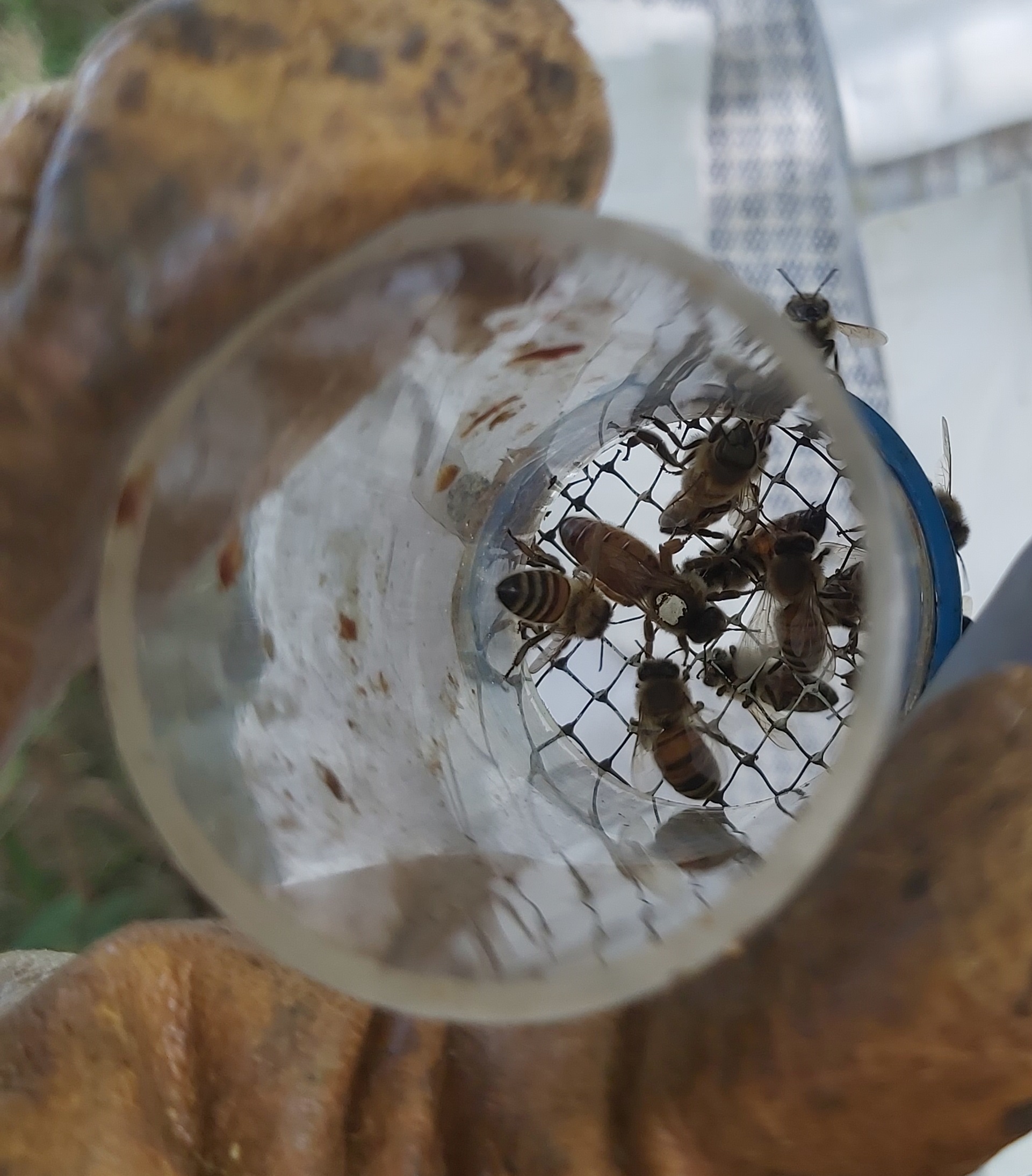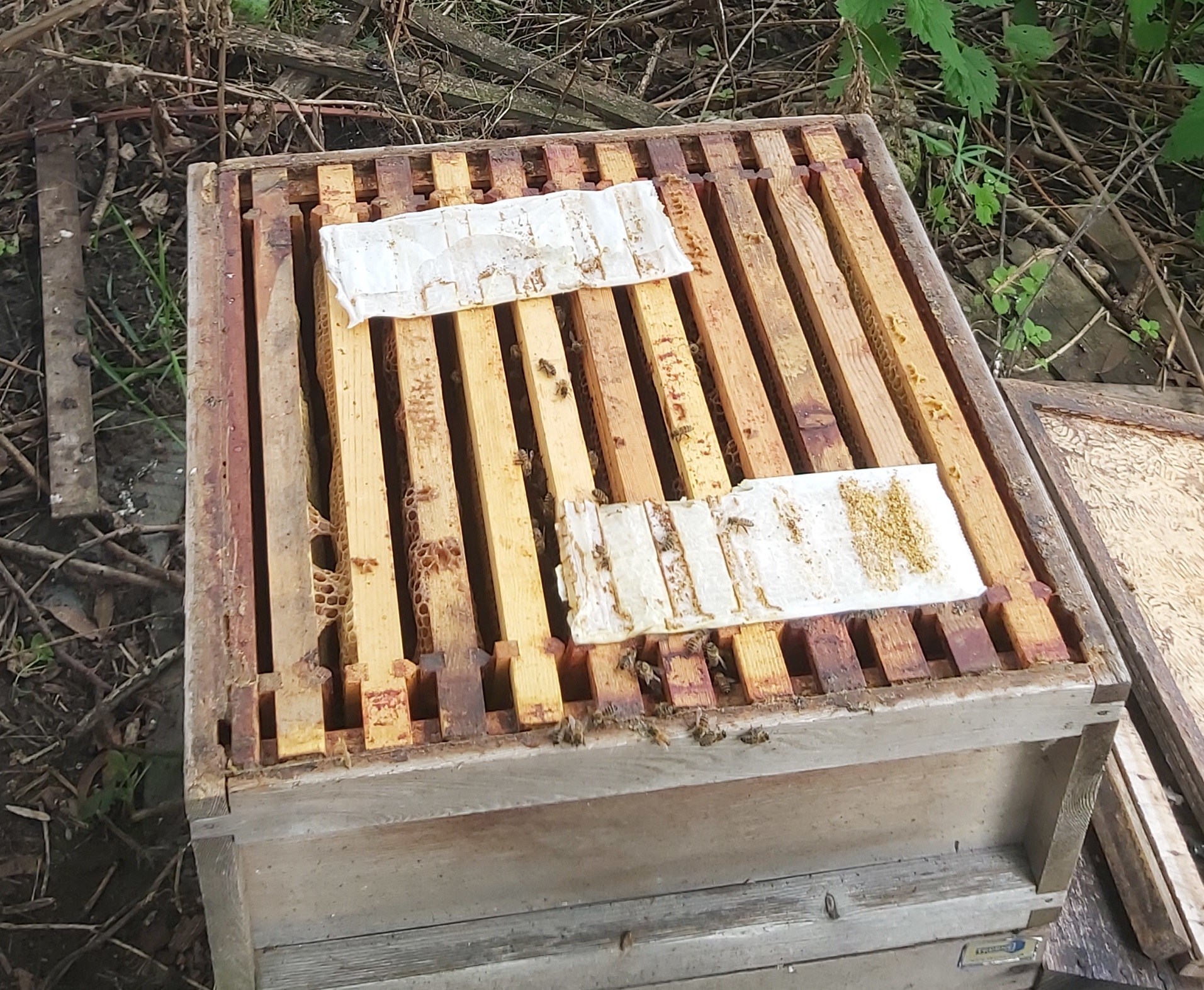 Abraham Lincoln
If given the truth, the people can be depended upon to meet any national crisis...
Abraham Lincoln
If given the truth, the people can be depended upon to meet any national crisis...
 Guildford news...
for Guildford people, brought to you by Guildford reporters - Guildford's own news service
Guildford news...
for Guildford people, brought to you by Guildford reporters - Guildford's own news service
Beekeeper’s Notes: Annual Debate On When The Central Heating Gets Turned On Starts
Published on: 1 Oct, 2022
Updated on: 1 Oct, 2022
Hugh Coakley keeps bees in Worplesdon
The annual debate between wifes and husbands about when to turn on the central heating was triggered by the sudden drop in temperature at the start of September.
The “put on another jumper” brigade battled with the “why do we have central heating if we don’t put it on” side. Every house will tell of a different outcome.

The queen in a cage getting marked on her back to make it easier to find her in a packed colony. Click on the image to enlarge it.
Energy prices will be playing a big factor now but apparently, the average time to turn the heating on was mid-October. Scientists say women are more likely to feel the cold than men and older people get colder more easily than the young. There is even reckoned to be a genetic aspect with red heads being more sensitive than others to the advancing cold weather.
It doesn’t bother the honey bees though who are well prepared for the cold and wet weather. Their honey larders are full and they can keep warm in the harshest of climates.
They are content now to gradually ramp down operations for the winter.
The queen is laying less. The workers are redistributing their honey to a more compact area on the hive, making it easier to get at when it really gets cold.

Can you spot the queen? It’s not easy so we re-marked her to make her easier to find in a crowded hive. It’s the beekeeping equivalent of Where’s Wally.
We are also doing what we can to assist their winter preparations.
Varroa treatment is high on the list. One hive had a severe dose of the mite and badly needed the medicine, a strong smelling pad impregnated with formic acid which knocks out the parasites. We treated all colonies but the affected hive was ailing and wouldn’t have lasted another season without a purge of the mite infestation.
It’s also the time to merge colonies, those without enough bees to survive a winter. And this we duly did with a weak, half sized hive and a slightly stronger colony. Joining them up gives them the numbers and the best chance to make it through what some have forecasted to be a harsh winter.
Fingers crossed, we shall see.
Recent Articles
- Guildford Institute’s Crowdfunding Project for Accessible Toilet in its New Community and Wellbeing Centre
- Letter: Guildford – Another Opportunity Missed?
- Letter: GBC’s Corporate Strategy – Where Is the Ambition?
- My Memories of John Mayall at a Ground-breaking Gig in Guildford Nearly Six Decades Ago
- Westborough HMO Plans ‘Losing the Heart of the Street’ Says Resident
- College Invests to Boost Surrey’s Economy and Close Digital Skills Gap
- Community Lottery Brings Big Wins for Local Charities
- GBC Housing Plan Promises ‘A Vibrant Urban Neighbourhood’ Near Town Centre
- Hospital Pillows ‘Shortage’ at the Royal Surrey
- Updated: Caravans Set Up Camp at Ash Manor School


Search in Site
Media Gallery
Dragon Interview: Local Artist Leaves Her Mark At One of England’s Most Historic Buildings
January 21, 2023 / No Comment / Read MoreDragon Interview: Lib Dem Planning Chair: ‘Current Policy Doesn’t Work for Local People’
January 19, 2023 / No Comment / Read MoreA3 Tunnel in Guildford ‘Necessary’ for New Homes, Says Guildford’s MP
January 10, 2023 / No Comment / Read More‘Madness’ for London Road Scheme to Go Ahead Against ‘Huge Opposition’, Says SCC Leader
January 6, 2023 / No Comment / Read MoreCouncillor’s Son Starts Campaign for More Consultation on North Street Plan
December 30, 2022 / No Comment / Read MoreCounty Council Climbs Down Over London Road Works – Further ‘Engagement’ Period Announced
December 14, 2022 / No Comment / Read MoreDragon Interview: GBC Reaction to the Government’s Expected Decision to Relax Housing Targets
December 7, 2022 / No Comment / Read MoreHow Can Our Town Centre Businesses Recover? Watch the Shop Front Debate
May 18, 2020 / No Comment / Read More










Recent Comments